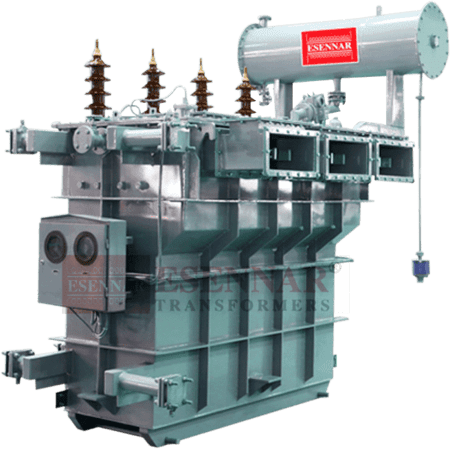

Sizing of a transformer is a crucial factor when planning a Solar PV Power Plant, as too large rated power can lead to instabilities and economic disadvantages and at the same time too small rated transformer power might not exploit the whole capability of the plant erected. Special multiple windings design of the transformer enables to connect multiple inverters to the grid with minor number of transformers in total.
We use customised Pro-E software & CAD tools for designing of Electrical Transformers, 3D view is possible and by given parameters how the transformer looks once manufactured can be simulated. We design as per IS & IEC standards. By the software usage we can predict how the transformer will behave under electromechanical stresses, short circuits and overloads. The designs are so chosen that the total cost including material, maintenance and the energy cost due to no load and load losses are economic.
Multiple Windings on Primary Side:
Special multiple windings [3, 4, 5, etc] design on primary side of the transformer enables to connect multiple inverters to the grid with minor number of transformers in total. The precise requirements vary from device to device and from site to site. That’s why each transformer will be almost as unique as a fingerprint when it comes to voltage, power, climate efficiency, network topology, permissible noise level, and other factors. Earth Shield is provided between the HV & LV windings to reduce the harmonics & path to ground any residual resonance.
Transformers across the world have been specified a certain voltage level depending on the location they are in. But it is very rare that the input voltage coming into the transformer is exactly as specified. This might cause irregular load on the windings inside and create frequent disruptions in the working of the transformer. To combat this, the tap leads arrangement is being efficiently used. One of its kind, tap Leads are designed across the axial length of the winding so that during short circuit the forces will be distributed equally across the winding. Taps are used to adjust the turn’s ratio to compensate for the variance in supply, thus increasing the transformer’s accuracy to match the specified output.